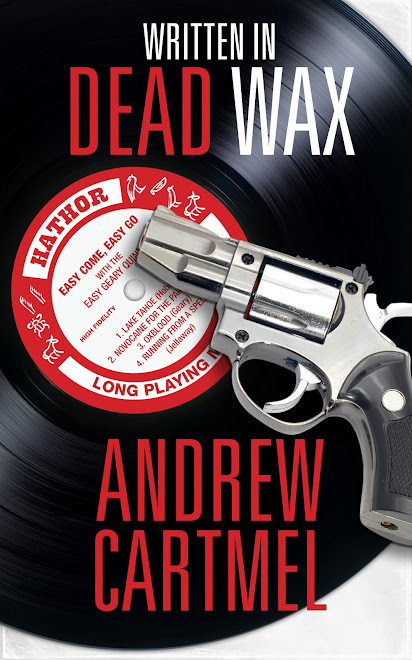 Before John D. MacDonald embarked on his distinguished career as a novelist he learned his trade writing short fiction for magazines, both pulp magazines and slicks. Most of these shorter efforts have been consigned to oblivion, but Border Town Girl is fascinating because it preserves two of the longer examples — what we'd call novellas.
Before John D. MacDonald embarked on his distinguished career as a novelist he learned his trade writing short fiction for magazines, both pulp magazines and slicks. Most of these shorter efforts have been consigned to oblivion, but Border Town Girl is fascinating because it preserves two of the longer examples — what we'd call novellas.The pair of stories are of roughly equal length and are called Border Town Girl (great title) and Linda (dull title). They were published in 1950 and 1956, the title story originally appearing in Dime Detective Magazine as 'Five Star Fugitive' (lame title), a pulp if there ever was one, and Linda making its debut in this book, although it would later be reprinted in a magazine hilariously entitled Climax.
 The long gap between the writing of the stories shows. Border Town Girl is about a disillusioned writer and war vet (a classic MacDonald protagonist) called Lane Sanson who gets caught up in drug smuggling from Mexico to Texas.
The long gap between the writing of the stories shows. Border Town Girl is about a disillusioned writer and war vet (a classic MacDonald protagonist) called Lane Sanson who gets caught up in drug smuggling from Mexico to Texas. It's an efficient and vivid tale, but it is chiefly notable for its villain, Christy, a great name — deceptively innocent sounding — for a memorable bad guy with frightening strength and "zany little blue eyes."
There is a hellish, nightmarish sequence when the wounded, fever-ridden Christy stumbles towards his revenge — and his demise.
 The story features some dud
dialogue like "You're a strange man, Lane Sanson", but on the other
hand there are some fine descriptions — "He drifted, soundless as smoke, across the room..." "The sun was a hot weight behind him, pushing him along."
The story features some dud
dialogue like "You're a strange man, Lane Sanson", but on the other
hand there are some fine descriptions — "He drifted, soundless as smoke, across the room..." "The sun was a hot weight behind him, pushing him along." And this wonderful evocation of an airliner, a "tired old plane" which "had sagged and blundered its way through storm and hail." The plane itself is virtually irrelevant to the story, but MacDonald just can't help being an outstanding writer.

Despite it's anodyne title Linda, written six years later, is a masterpiece. It tells of a dull little man, a "desperado of the cellar workshop," who has somehow managed to marry a gorgeous siren. "Linda was flamboyantly noticeable." Whereas their friend Stella's appeal is "subtle in the way that a Japanese print is subtle."
Poor Stella is going to be murdered by Linda and her own husband, and they are going to frame Linda's husband, the dull little man, for the killing. I could hardly bear to go on reading as the jaws of fate closed savagely on our hero...
 The carefully planned murder takes place when the two couples go on holiday to Florida in rented cabins beside the beach. As usual, MacDonald brings the setting wonderfully to life: "Small sandpipers ran in flocks, pecking and then trotting up and away from the lap of waves, like groups of spry, stooped little men in tailcoats with their hands locked behind them."
The carefully planned murder takes place when the two couples go on holiday to Florida in rented cabins beside the beach. As usual, MacDonald brings the setting wonderfully to life: "Small sandpipers ran in flocks, pecking and then trotting up and away from the lap of waves, like groups of spry, stooped little men in tailcoats with their hands locked behind them."The killing of Stella is horrific, as is the apparently full-proof framing of our hero. But, incredibly and satisfyingly, the tables are turned and Linda becomes "a shrewd animal fighting for its life."
 This is an explosive, harrowing and unforgettable tale. No wonder it was twice filmed for television.
This is an explosive, harrowing and unforgettable tale. No wonder it was twice filmed for television. (Image credits: The covers are from Good Reads, except for the garter-and-typewriter which is from Pinterest. The magazine illustration for Linda is from the superb and informative MacDonald blog The Trap of Solid Gold. The original McGinnis illustrations — including the rather more cheeky one — are from Elisa Rolle's McGinnis blog. )




No comments:
Post a Comment